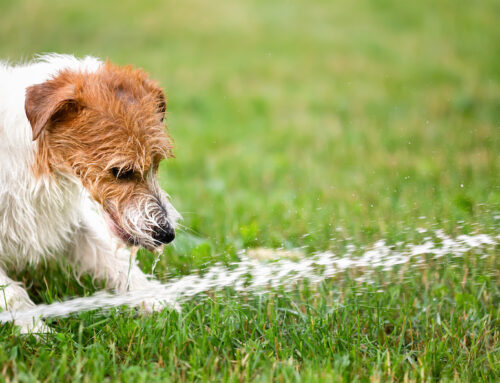If you’re a pet-loving parent, you probably know how incredible the bond between kids and their furry friends can be. That’s why it’s crucial to teach kids proper pet care from an early age. Not only does it ensure the well-being and happiness of your four-legged family member, but it also instills essential values of responsibility, empathy, and kindness in your little ones. But what do kids need to know the most about pet care?
Whether it’s feeding, grooming, or providing love and attention, teaching kids the importance of taking care of their pets sets the foundation for a lifelong love and understanding of animals. Let’s explore why teaching proper pet care is a fantastic idea for both your child and their new best friend!
Choosing the Right Pet for Your Child
Dogs are often excellent companions for kids due to their loyal and affectionate nature. Consider breeds known for their friendliness and patience, such as Golden Retrievers or Labrador Retrievers. Don’t forget to involve your child in training and socialization to foster a strong bond between them.
Another option is small mammals. Animals like guinea pigs, hamsters, or rabbits can make great pets for kids. They are low-maintenance and teach children responsibility without overwhelming them. Encourage gentle handling and provide suitable enclosures and enrichment activities for their small furry friends.
What to Consider When Choosing a Pet for a Child
One very important factor in choosing a child’s pet is the age of your kid. Ensure that your pet safe for your child’s age and developmental stage. Young children may do well with pets that require less physical handling, like fish or reptiles. Meanwhile, older kids can handle more responsibility with larger animals like cats or dogs.
Other factors to consider include:
- Allergies and sensitivities: Check if any family members have allergies or sensitivities to certain animals before bringing a pet home. Consider hypoallergenic breeds or alternative pets like reptiles or fish if allergies are a concern.
- Space and living conditions: Assess the space available in your home and the specific needs of different pets. For instance, dogs require ample space for exercise, while some smaller animals like guinea pigs or birds can thrive in more confined spaces. Research the specific requirements of different pets and choose accordingly.

Preparing for a New Pet
Gather as much information as possible about your chosen pet’s specific needs, including dietary requirements, exercise needs, grooming routines, and potential health concerns. This knowledge will help you provide the best care and ensure your pet’s overall well-being.
Seek guidance from reputable sources such as books, online resources, or local veterinarians. Connect with experienced pet owners or join online communities dedicated to your chosen pet’s breed or species. The more you know, the better prepared you’ll be to meet your new pet’s unique needs.
Creating a Safe and Pet-Friendly Environment
- Prepare your home by removing any potential hazards such as toxic plants, chemicals, or small objects that your pet could swallow. Secure electrical cords, store cleaning products safely, and ensure any areas your pet shouldn’t access are properly gated or closed off. If you have young children, this is likely ready to go!
- Set up a designated area for your pet with their bed, toys, and food and water bowls. Make sure the area is comfortable, easily accessible, and away from loud noises or heavy foot traffic. Consider crate training for dogs to provide them with a safe space when needed.
Proper preparation is key to a smooth transition for both you and your new pet.
Gathering Essential Supplies and Equipment
It helps kids to know the essential supplies and equipment for pet care. This is a good time to teach your child about your pet’s diet, and even specific dietary needs. You’ll also want to teach them about poisonous food for pets.
For example, practice portion control and establish regular feeding schedules. Avoid overfeeding, as obesity can lead to various health issues. Follow feeding guidelines provided by your veterinarian. You can also turn to the guide on the food packaging to maintain a healthy weight for your pet.
Get Kids to Help with Hygiene and Grooming
Now is the time to get your child to help with pet grooming. Regularly bathe and brush your pet to keep their coat clean and healthy. Use pet-safe products and techniques suitable for their specific fur type. This helps prevent matting, skin issues, and excessive shedding.
Meanwhile, don’t forget about nail trimming and dental care. Trim your pet’s nails regularly to keep them at a safe length, or consider professional grooming services. Additionally, establish a dental hygiene routine by brushing your pet’s teeth or providing dental treats recommended by your veterinarian to maintain good oral health.
Playtime is Perfect for Exercise and Physical Activity
Understand the importance of regular exercise for pets. Dogs, for instance, require daily walks and active playtime to stay physically and mentally stimulated. Cats need opportunities for play, such as interactive toys or climbing structures. Exercise helps prevent obesity, promotes muscle development, and enhances overall well-being. It’s the perfect activity for both pets and child!
Another idea is to tailor exercise routines to your pet’s needs and abilities. Consider their breed, age, and any health conditions. Engage in activities that challenge them physically and mentally, ensuring a balance between cardiovascular exercise and mental stimulation.
Health and Veterinary Care
Depending on the age of your child, they may already know the importance of doctor’s checkups. They need to learn the same concept for pet care.
Schedule regular check-ups with a veterinarian to monitor your pet’s overall health and detect any potential issues early on. Vaccinations play a vital role in preventing diseases, so ensure your pet receives their recommended vaccinations on schedule.
Signs of Illness and When to Seek Veterinary Care
Teach your child that your pet can’t tell you when they don’t feel good. That’s why it’s important for them to understand the signs of illness. Here are some helpful tips:
- Familiarize yourself with common signs of illness in pets, such as changes in appetite, lethargy, excessive thirst, vomiting, diarrhea, or abnormal behavior. Pay attention to any noticeable changes in their appearance, coat quality, or bathroom habits.
- Trust your instincts and don’t hesitate to seek veterinary care if you notice any concerning symptoms. Early intervention can make a significant difference in your pet’s health. Contact your veterinarian immediately or seek emergency care if the symptoms are severe or life-threatening.
Assigning Age-Appropriate Tasks for Pet Care
Involve your child in pet care by assigning age-appropriate tasks. Younger children can assist with simple tasks like filling the water bowl, helping with feeding (under supervision), or gently brushing the pet’s fur. Older children can take on more responsibility, such as walking the dog, cleaning the litter box, or participating in training sessions.
Clearly communicate the expectations and demonstrate the tasks to your child, providing guidance and supervision as needed. Assigning these tasks not only helps with the pet’s care but also teaches responsibility, empathy, and the importance of contributing to the family.
Teaching Kids to Recognize and Respond to Warning Signs
Luckily, many pets are great with children. However, you never want to risk a potentially serious incident. Educate your child about the warning signs that indicate a pet’s discomfort or stress, such as growling, hissing, flattened ears, or a stiff body posture. Teach them to recognize these signs and understand that it’s crucial to give the pet space and avoid further interaction when they exhibit such behavior.
Instruct your child to respond calmly by slowly moving away from the pet and notifying an adult if they notice any warning signs. Teach them not to provoke or tease the pet, as this can lead to negative reactions and potential harm.
Always supervise interactions between your child and the pet, especially when they are still learning to understand each other’s boundaries.
Get Help with Pet Care from Animal Care Center
Are you looking for the best pet care? Bring your kids to your pet’s next checkup, giving them a chance to see how they can care for their pet in the very best way. Contact us today to schedule an appointment.





